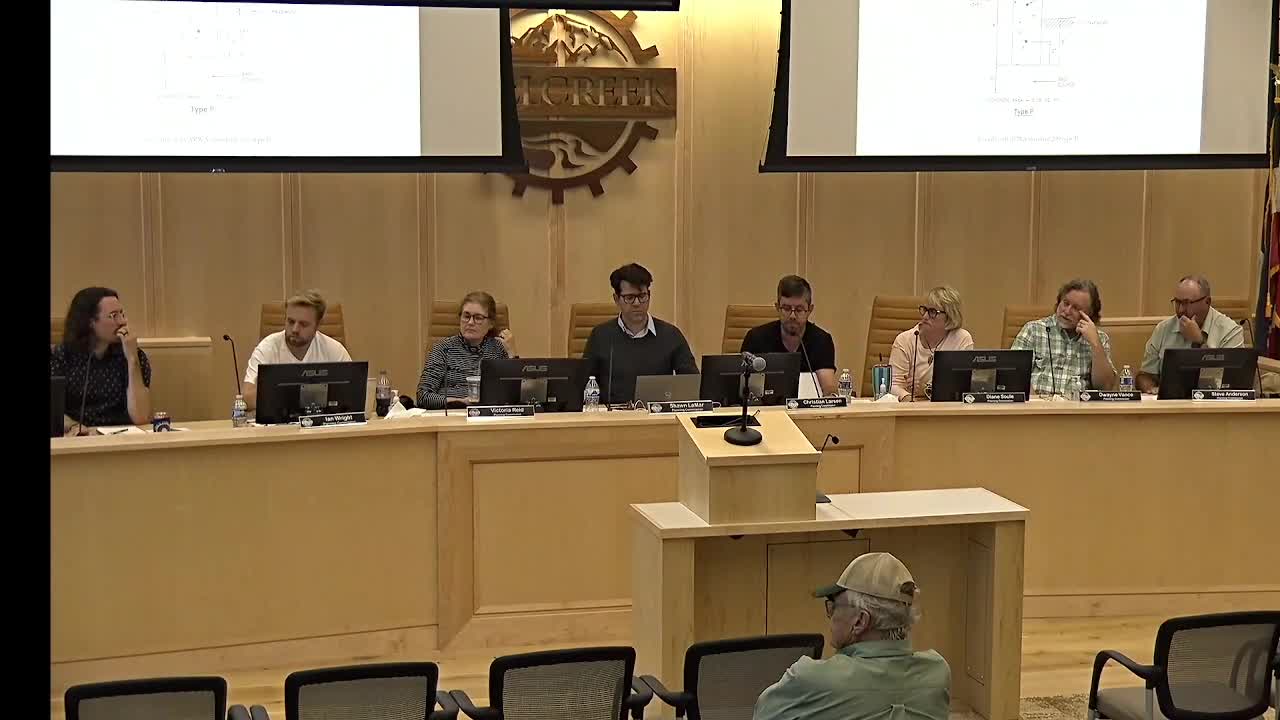Community debates crucial sidewalk improvements amid safety concerns
October 16, 2024 | Millcreek City Planning Commission , Millcreek, Salt Lake County, Utah
This article was created by AI summarizing key points discussed. AI makes mistakes, so for full details and context, please refer to the video of the full meeting. Please report any errors so we can fix them. Report an error »

In a recent government meeting, discussions centered around a proposed subdivision that involves splitting a family-owned property into two parcels. The primary concern raised was the requirement for infrastructure improvements, including curbs, sidewalks, and gutters, along the property’s extensive road frontages. Officials noted that these improvements are mandated by city codes, which require compliance for any development that fronts onto a public right-of-way.
The conversation highlighted the complexities of public safety in relation to existing infrastructure. One official pointed out that while the road is narrow, the city must adhere to its transportation master plan, which calls for improvements to both frontages of the property. This includes the installation of sidewalks, curb, and gutter systems, despite the existing conditions that may complicate such developments.
A significant point of contention arose regarding the potential impact of these improvements on a historic wall adjacent to the property. Concerns were expressed about the possibility of damage to the wall during construction, as well as the implications for public safety if the wall were to be removed or altered. The city’s code stipulates that property owners are responsible for improvements adjacent to their property, which raises questions about liability should damage occur.
The meeting also touched on the community's historical context, with references to previous efforts to improve the area that faced local opposition. Residents had previously resisted changes that would have involved removing the wall, leading to a compromise that allowed for some existing infrastructure to remain.
As the discussion progressed, the applicant, represented by Chris Bick from Kimberly Horn, expressed gratitude for the collaborative efforts of the community council and local residents. Bick emphasized the importance of maintaining the historic wall while also addressing the need for safe pedestrian pathways. The community council had unanimously supported the proposal for exceptions to the standard requirements, reflecting a desire to balance development with the preservation of local character.
The meeting concluded with a recognition of the challenges ahead, particularly regarding the integration of new infrastructure with existing conditions. Officials acknowledged that while the current application focuses on immediate improvements, broader discussions about future developments and their implications for public safety and community aesthetics would continue.
The conversation highlighted the complexities of public safety in relation to existing infrastructure. One official pointed out that while the road is narrow, the city must adhere to its transportation master plan, which calls for improvements to both frontages of the property. This includes the installation of sidewalks, curb, and gutter systems, despite the existing conditions that may complicate such developments.
A significant point of contention arose regarding the potential impact of these improvements on a historic wall adjacent to the property. Concerns were expressed about the possibility of damage to the wall during construction, as well as the implications for public safety if the wall were to be removed or altered. The city’s code stipulates that property owners are responsible for improvements adjacent to their property, which raises questions about liability should damage occur.
The meeting also touched on the community's historical context, with references to previous efforts to improve the area that faced local opposition. Residents had previously resisted changes that would have involved removing the wall, leading to a compromise that allowed for some existing infrastructure to remain.
As the discussion progressed, the applicant, represented by Chris Bick from Kimberly Horn, expressed gratitude for the collaborative efforts of the community council and local residents. Bick emphasized the importance of maintaining the historic wall while also addressing the need for safe pedestrian pathways. The community council had unanimously supported the proposal for exceptions to the standard requirements, reflecting a desire to balance development with the preservation of local character.
The meeting concluded with a recognition of the challenges ahead, particularly regarding the integration of new infrastructure with existing conditions. Officials acknowledged that while the current application focuses on immediate improvements, broader discussions about future developments and their implications for public safety and community aesthetics would continue.
View full meeting
This article is based on a recent meeting—watch the full video and explore the complete transcript for deeper insights into the discussion.
View full meeting

